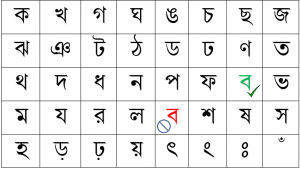

It is a descendant of the 3rd century BCE Brāhmī script, which evolved into the Nagari script which in turn gave birth to Devanāgarī and Nandināgarī. History ĭevanāgarī is part of the Brahmic family of scripts of India, Nepal, Tibet, and Southeast Asia.


According to Fischer, Nāgarī emerged in the northwest Indian subcontinent around 633 CE, was fully developed by the 11th century CE, and was one of the major scripts used for the Sanskrit literature. The use of the name devanāgarī emerged from the older term nāgarī. Hence, devanāgarī can be translated as "from the abode of divinity". Nāgarī comes from नगरम् nagaram, a Sanskrit word meaning "town". Etymology ĭevanāgarī is a compound of deva ( देव) and nāgarī ( नागरी).ĭeva means "heavenly", "divine", or "deity". The Devanāgarī script is closely related to the Nandināgarī script commonly found in numerous ancient manuscripts of South India, and it is distantly related to a number of southeast Asian scripts. Īmong the languages using it as a primary or secondary script are Marathi, Pāḷi, Sanskrit (the ancient Nāgarī script for Sanskrit had two additional consonant characters), Hindi, Boro, Nepali, Sherpa, Prakrit, Apabhramsha, Awadhi, Bhojpuri, Braj Bhasha, Chhattisgarhi, Haryanvi, Magahi, Nagpuri, Rajasthani, Bhili, Dogri, Kashmiri, Konkani, Sindhi, Nepal Bhasa, Mundari, and Santali. In a cursory look, the Devanāgarī script appears different from other Indic scripts such as Bengali-Assamese, or Gurmukhi, but a closer examination reveals they are very similar except for angles and structural emphasis. It is written from left to right, has a strong preference for symmetrical rounded shapes within squared outlines, and is recognisable by a horizontal line, known as a shirorekhā, that runs along the top of full letters. Unlike the Latin alphabet, the script has no concept of letter case. The orthography of this script reflects the pronunciation of the language. The Devanāgarī script, composed of 47 primary characters, including 14 vowels and 33 consonants, is the fourth most widely adopted writing system in the world, being used for over 120 languages. It was developed and in regular use by the 7th century CE. It is one of the official scripts of the Indian Republic. Devanāgarī or Devanagari ( / ˌ d eɪ v ə ˈ n ɑː ɡ ə r i/ DAY-və- NAH-gə-ree देवनागरी, IAST: Devanāgarī, Sanskrit pronunciation: ), also called Nāgarī ( Sanskrit: नागरी, Nāgarī), is a left-to-right abugida (a type of segmental writing system), based on the ancient Brāhmī script, used in the northern Indian subcontinent.


 0 kommentar(er)
0 kommentar(er)
